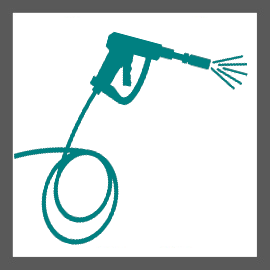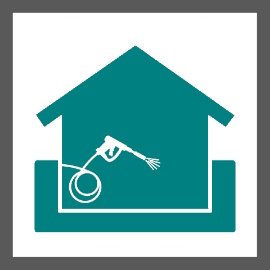
Noble offers one-time pest & termite control in Houston and surrounding areas—fast, effective, and hassle-free!
Your technician will apply the correct spot treatment for a specific pest problem that will both eliminate the problem problem and prevent them from springing up in the future.
At Noble Pest & Termite we care about the health and safety of you and your family. That's why our team provide effective pest control services with the minimal amount of chemical treatments possible. Employ us to keep your Houston home safe from pests.
SUBTERRANEAN TERMITE TREATMENTS:
Active Infestation Trenching
Preventative Treatment Topical
New Build Slab Pre-Treatment
New Build Stud Pre-Treatment
TERMITE TREATMENTS
New Build Slab
Pre-Treatment
Active Infestation Trenching
$900 /service*
New Build Stud
Pre-Treatment
Preventative
Topical Treatment
$500 /service*
* = Termite Pricing is for residential and is based on a service agreement with Noble. Pricing will change for builders, commercial properties, larger homes or for customers that don’t have a service agreement setup with Noble. See our full pricing list here.
SUBTERRANEAN TERMITES
Active Infestation - Trenching
In cases of active infestations caused by subterranean termites, Noble Pest & Termite employs a specialized method known as subterranean trenching. This treatment technique is specifically designed to target and eliminate subterranean termites, which are known for their underground nesting habits.
Here's how the subterranean trenching process works:
Inspection: Our experienced technicians will conduct a thorough inspection of your property to identify signs of subterranean termite activity and locate their entry points.
Digging the trench: A trench is dug along the perimeter of your home, typically around the foundation, focusing on areas where termite activity is detected. The trench is usually dug to a depth of about 6-8 inches.
Termiticide application: A liquid termiticide specifically formulated for subterranean termites is applied to the trench. The termiticide is carefully mixed and diluted according to manufacturer instructions and then poured into the trench, saturating the soil.
Treating the backfill: As the trench is refilled with soil, the backfill material is treated with the termiticide to create a continuous barrier. This ensures that any termites coming into contact with the treated soil are affected.
Additional treatments: Depending on the extent of the infestation and the specific needs of your property, our technicians may also apply termiticide treatments to other vulnerable areas such as crawl spaces, basements, or other areas where subterranean termites may be present.
At Noble Pest & Termite, we prioritize the thoroughness and efficacy of our treatments. Our skilled technicians have the expertise to perform subterranean trenching with precision, ensuring maximum impact on the termite colony and protecting your home from further damage.
If you are looking for exceptional termite control for your Houston area home or business, reach out to the friendly, local pest control experts at Noble Pest & Termite today!
SUBTERRANEAN TERMITES
Preventative Treatment - Topical
When it comes to preventative treatment for subterranean termites, topical treatments typically involve the application of termiticides directly to the surfaces of vulnerable areas or potential termite entry points. These treatments create a protective barrier that repels or kills termites upon contact. Here's an overview of topical preventative treatments for subterranean termites
Termiticide Application: Professional pest control experts will apply termiticides to the exterior surfaces of a building, targeting areas where termites are likely to gain entry. Common application sites include foundation walls, concrete slabs, exterior perimeter soil, and areas near utility penetrations.
Trenching and Rodding: Trenching involves digging a trench around the foundation of the building and applying the termiticide solution directly into the soil. This creates a continuous barrier that termites cannot easily cross. Rodding is a similar technique where a rod or tool is used to inject termiticide into the soil around the foundation.
Perimeter Spraying: Termiticides can be sprayed directly onto the exterior surfaces of the building, such as foundation walls, crawl spaces, and areas where wood and soil come into contact. This helps create a protective barrier that termites cannot penetrate.
Spot Treatment: Spot treatments involve the direct application of termiticide to specific areas where termite activity is observed, such as mud tubes or infested wood. This targeted approach aims to eliminate active termite colonies and prevent further infestation.
Wood Treatments: Treating wooden structures, including framing, supports, and other vulnerable areas, with termiticide or wood preservatives is also an important aspect of topical preventative treatment. These treatments make the wood less attractive or toxic to termites, reducing the likelihood of infestation.
If you are looking for exceptional termite control for your Houston area home or business, reach out to the friendly, local pest control experts at Noble Pest & Termite today!
SUBTERRANEAN TERMITES
New Build Slab Pre-Treatment
New-build slab pre-treatment refers to the application of termite preventive measures during the construction of a building with a concrete slab foundation. This pre-treatment aims to protect the structure from subterranean termite infestations by creating a chemical barrier around the foundation. Here's an overview of the slab pre-treatment process for subterranean termites
Soil Treatment: The first step in slab pre-treatment involves treating the soil beneath the concrete slab. A liquid termiticide is applied to the soil before the slab is poured, creating a chemical barrier that repels or kills termites attempting to enter the structure from below. This soil treatment forms the primary line of defense against subterranean termites.
Perimeter Treatment: In addition to treating the soil beneath the slab, a termiticide is also applied to the soil around the perimeter of the foundation. This treatment is typically done by trenching along the outer edges of the future slab or by drilling holes and injecting the termiticide. This perimeter treatment helps ensure that termites cannot bypass the chemical barrier by tunneling through the soil.
Plumbing and Utility Penetrations: Special attention is given to plumbing and utility penetrations through the slab. These areas are treated with termiticides or physical barriers to prevent termite entry points. For example, termite shields or stainless steel mesh can be installed to deter termites from accessing the structure through utility openings.
Post-Construction Treatment: After the slab is poured and the building is constructed, additional termite preventive measures may be taken. This can include treating any expansion joints, construction joints, or other vulnerable areas where termites may gain access. Ongoing inspections and maintenance are also recommended to ensure the long-term effectiveness of the pre-treatment.
If you are looking for exceptional termite control for your Houston area home or business, reach out to the friendly, local pest control experts at Noble Pest & Termite today!
SUBTERRANEAN TERMITES
New Build Stud Pre-Treatment
New-build stud pre-treatment refers to the application of termite preventive measures during the construction of a building, specifically targeting the wooden studs or framing. This pre-treatment aims to protect the structural components of the building from subterranean termite infestations. Here's an overview of the stud pre-treatment process for subterranean termites
Soil Treatment: The first step in stud pre-treatment involves treating the soil around the perimeter of the building's foundation. A liquid termiticide is applied to the soil, creating a chemical barrier that repels or kills termites attempting to enter the structure. This soil treatment forms the initial line of defense against subterranean termites.
Foundation Perimeter Treatment: In addition to the soil treatment, a termiticide is also applied to the exterior foundation walls. This treatment is typically done by spraying or trenching around the foundation perimeter. It helps ensure that termites cannot bypass the chemical barrier by tunneling through the foundation.
Stud/Framing Treatment: Once the foundation perimeter is treated, the wooden studs or framing components are treated with a wood preservative or borate-based solution. This treatment helps protect the wood against termite infestation. The preservative is usually applied to the cut ends and any areas where the wood comes into contact with the soil or masonry.
Post-Construction Treatment: After the building is constructed, additional termite preventive measures may be taken. This can include treating any crawl spaces, utility penetrations, expansion joints, or other vulnerable areas where termites may gain access. Ongoing inspections and maintenance are also recommended to ensure the long-term effectiveness of the pre-treatment.
If you are looking for exceptional termite control for your Houston area home or business, reach out to the friendly, local pest control experts at Noble Pest & Termite today!



















